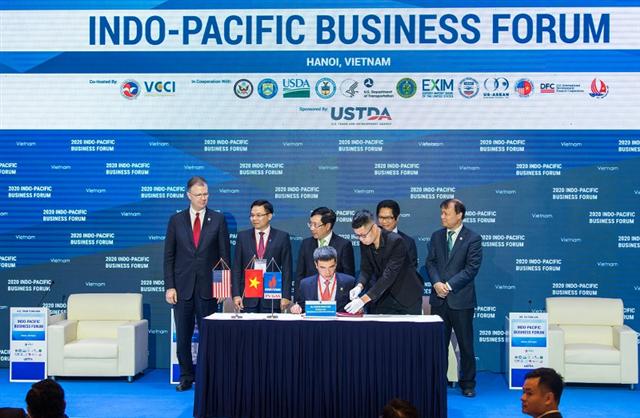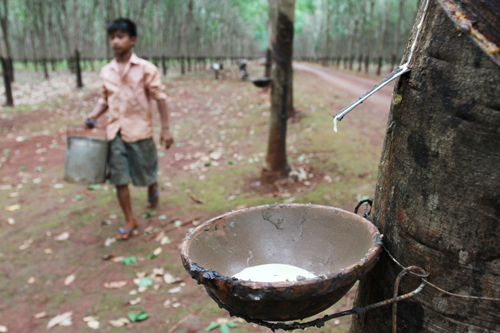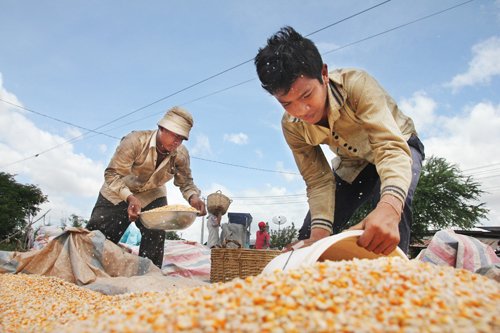Rice exports to region rising
Rice exports to region rising
Cambodian milled rice exports are gradually lessening their dependency on a single market by expanding their shipping destination in Asia, a sign insiders say is good news for the industry
Kim Savuth, president of the Federation of Cambodian Rice Exporters, told the Post yesterday that milled rice exports to European countries, Cambodia’s traditional market, is still increasing, but its percentage share is gradually decreasing. He said the trend of exports to Asian market is on the rise.
“We are able to maintain old market and in addition we can export to new destinations. This is because of our fragrant rice is getting better known,” Said Kim Savuth.
In the first four months of this year, Cambodia exports to Malaysia, Thailand and China, reached 40,500 tonnes, 34 per cent Cambodia’s total overseas exports, according to figures from the secretariat of the One Window Service for rice exports.
The data show that those three countries are among the top five importers that bring in rice from Cambodia, with France and Poland at numbers one and two.
During the first four months of this year, Cambodia exported 118,000 tonnes of milled rice, a 130 per cent increase from the same period last year.
In the past few years, the Cambodian government has signed trade deals with a number of countries, including China, Malaysia, Indonesia and more EU countries to open access to their markets.
While experts agree that the potential is there, David Van, deputy secretary-general of the Alliance of Rice Producers and Exporter of Cambodia (ARPEC), said access to Chinese and Malaysian market is increasing, but added the flow is only fragrant rice.
“The sector’s competitiveness depends on cost, and the cost of milling rice in Cambodia is still high in comparison to other major exporters,” said David Van. “Anyway, our fragrant rice has enough of a competitive advantage.”
Regarding price competitiveness, Cambodian rice millers, exporters and traders benefit from a competitive edge in the European Union market thanks to tax exemptions.
The European Union’s “Everything But Arms” initiative exempts Cambodia, currently on the UN list of Least Developed Countries, from an import tax of €175 (about $224) per tonne for the EU market.
However, Kim Savuth said potential exists not only in the EU, but also China and Malaysia. Cambodian rice is able to go to China, Malaysia, and other countries “if we have more fragrant rice to export”, he added.
“Regardless of trade preferential treatment, our fragrant rice can export to wherever we want and compete.”
China’s rice imports have increased nearly four-fold to about two million tonnes in 2012 and are expected to reach about 2.5 million tones, according to some estimates. Cngrain.com, an agricultural news website, estimated that China’s 2013 rice imports may total 3.25 million tonnes.
“There is not concern on demand side, but we have to be sure we have enough quality rice to fit their demand,” said David Van.
phnom penh post



















